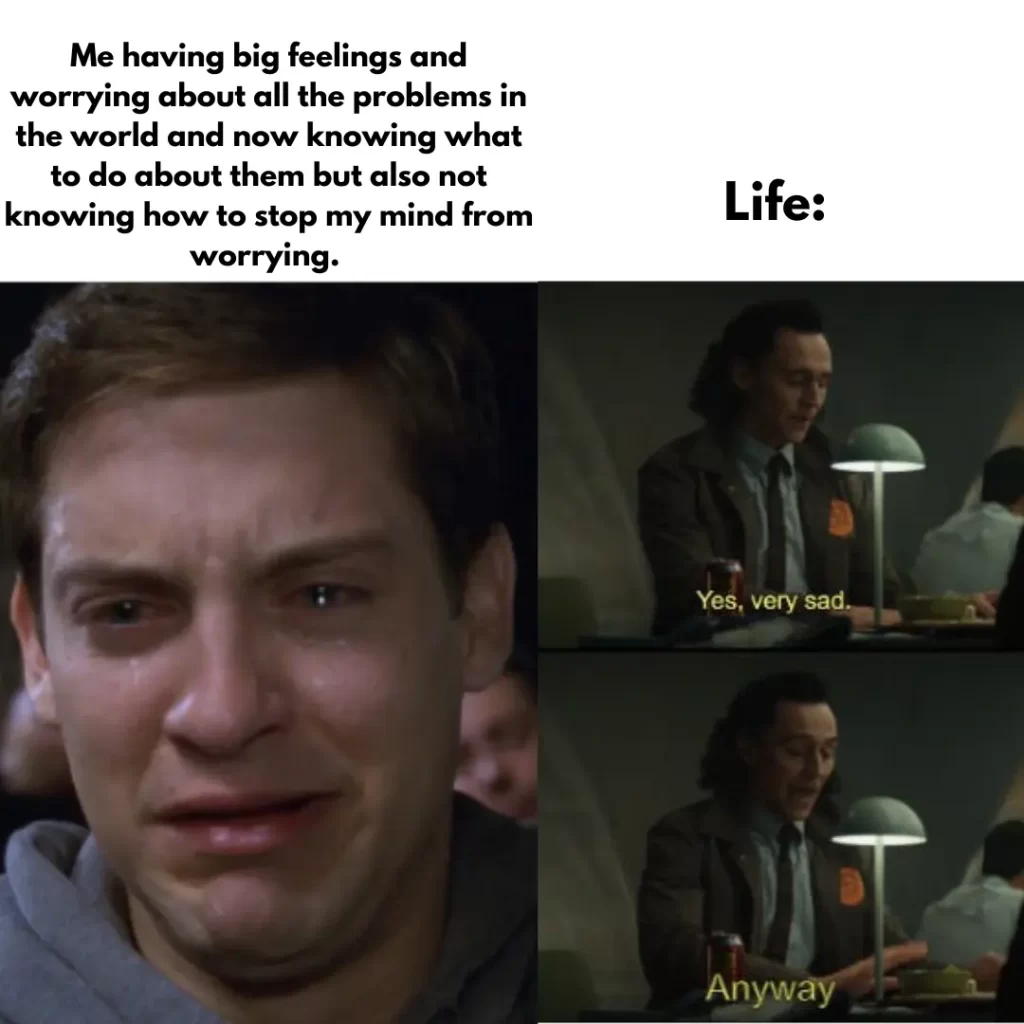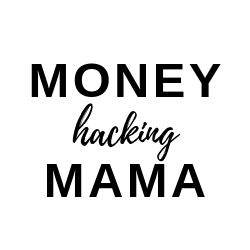Wondering how to be happier? In this post, we’ll share 5 easy rituals that will make you happier, and they don’t cost a thing.
I had just returned from a beautiful tropical vacation.
When my co-workers asked how it went, I couldn’t help but highlight what went wrong.
At that moment, I couldn’t help but notice what I was doing.
Despite having a great time, I highlighted what went wrong instead of what went right.
It’s counterintuitive, isn’t it?
We’d expect the brain to leap towards happy feelings, much like a dog with a tennis ball.
But oddly enough, negative feelings can also light up our brain’s neon “Reward Here!” sign.
The brain is a quirky thing.
Why Feeling Bad Can Be So…Rewarding?

Our brains have a hotspot known as the reward center. When you bite into a chocolate truffle or receive a compliment, this center goes, “Woop! Here’s some dopamine for you!” Dopamine is like the body’s in-house confetti cannon.
But here’s what’s weird. Guilt and its moody cousin, shame, also light up this party hub.
Why?
Some theorize that focusing on the negative has evolutionary advantages.
Messed up with your tribe in the caveman days?
Feeling bad and making amends could be the difference between a warm fire and being shunned.
Why Our Brains Love the Drama of Worry
If the brain had a Facebook status with worry, it’d be “It’s complicated.”
Worrying is like the brain’s personal treadmill.
It feels productive, but we’re not always going anywhere. By worrying, our brains are trying to gain control over uncontrollable situations. After all, a busy brain feels better than a helpless brain.
According to neuroscientist Alex Korb, “Worrying can help calm the limbic system by increasing activity in the medial prefrontal cortex and decreasing activity in the amygdala. That might seem counterintuitive, but it just goes to show that if you’re feeling anxiety, doing something about it — even worrying — is better than doing nothing.”
Unfortunately, worrying about things outside of our control simply doesn’t work.
Luckily this does. Here’s how to be happier:
1. The Wonder-Drug Called Gratitude
Luckily, there’s a simple solution. Gratitude is the brain’s equivalent of a warm blanket and hot tea on a snowy day. When you’re thankful, you’re not just being polite to the universe. You’re also dishing out serotonin – another brain delight. Serotonin is our neural peacekeeper. It’s the “don’t worry, be happy” hormone. Gratitude increases both serotonin and dopamine levels. So, whenever you count your blessings, you give your brain a double dose of joy.
How do you get started? Simply ask yourself this question:
“What am I grateful for?”
The beauty is the more you search for things to be grateful for, the better you get at finding them. Even in the darkest moments, there’s often a pinprick of light. So, train your brain to hunt for happiness, and it’ll start finding it everywhere.
Learn more:
Discover Your Top Values: Core List of 75 Common Values to Start Using Now for a More Aligned Life
2. Physical Exercise
We often tie the idea of exercise to images of chiseled abs, toned legs, or the ability to run a mile without collapsing into a sweaty, breathless heap. While these are commendable (and Instagrammable) goals, they only scratch the surface of what physical activity can do for you.
Behind the scenes, away from the flexing and the mirrors, exercise is doing a magnificent dance with your brain. Every time you engage in physical activity, your body releases endorphins. Now, if you’re wondering, “Endo-what?” let me break it down.
Endorphins are neurotransmitters – essentially, your brain’s messengers. They play a pivotal role in minimizing discomfort and pain. More excitingly, they’re behind that euphoric sensation famously termed the “runner’s high.” But here’s the zinger: you don’t need to be a marathon runner to enjoy this natural high. A brisk walk, a fun Zumba session, or even a spirited living room dance-off can get those endorphins pumping and, as a result, help make you happier.
Beyond just feeling good, regular physical activity can sharpen your memory, improve sleep, and reduce feelings of anxiety and depression. So, the next time you lace up those sneakers or unroll that yoga mat, remember you’re not just sculpting a better body. You’re sculpting a happier, healthier brain.
Learn more:
How to Lose Weight Fast: Everything You Need to Know
3. Recognize and Name Emotions
Ah, emotions. Those complex whirlwinds of feelings can elevate us to the pinnacles of joy or plunge us into the abyss of despair. But let’s talk about a small hack that can make a world of difference: putting a name to that feeling.
Picture this: You’re watching a movie, and a particular scene makes your chest tighten, your eyes water, or your fists clench. Instead of broadly classifying it as being “moved” or “upset,” dive a bit deeper. Are you touched because it reminded you of a nostalgic memory? Are you angered by a character’s decision? Perhaps you’re envious of a beautiful on-screen relationship or disappointed by an unexpected plot twist.
Now, this isn’t just a movie-watching exercise; it’s a microcosm of life itself. By precisely naming our emotions, we’re doing something profoundly therapeutic. We’re confronting them.
Name It To Tame It
Here’s where the brilliant neuroscience comes in. The amygdala, a part of your brain often likened to an alarm bell, goes off when you feel threatened or uneasy. It’s primal, preparing you for the classic ‘fight or flight’ response. However, when you identify and label that emotion — admitting to yourself, “I’m not just upset, I’m feeling rejected” — you’re essentially calming the amygdala down. Think of it as giving your brain a soothing pat, saying, “Hey, it’s okay. We understand what’s happening.”
So, why is this important? When the amygdala is less activated, it paves the way for the prefrontal cortex, the brain’s logical center, to step up. You begin to think more clearly, react more reasonably, and essentially become a master of your emotions rather than their puppet.
In essence, pinpointing our emotions is like mapping out our mental landscape. The more detailed our map, the better equipped we are to navigate the turbulent waters of our minds.
So the next time a tidal wave of feelings threatens to overwhelm you, grab that emotional GPS, label that feeling, and remember: by naming it, you’re truly taming it.
4. Get Social
Imagine a world where all our interactions were digital, where emojis replaced smiles, and where ‘likes’ were the currency of affection. Oh, wait – for many of us, that’s starting to sound eerily familiar, isn’t it? As much as technology has bridged gaps and made our global village tighter, it can’t replace the irreplaceable: genuine human connection.
We’re wired to be social creatures. From our caveman ancestors sitting around a fire, sharing tales and a freshly hunted meal, to us gathering around a coffee table or attending family gatherings (sometimes reluctantly) – being with others is in our DNA. Even the most introverted among us have a fundamental need for some level of social interaction.
So why is spending face-to-face time with our peers, friends, or family members so critical? Let’s dive into some fun, brainy facts.
The Love Hormone
When we engage in personal interactions, our brains release a cocktail of feel-good chemicals. Oxytocin, often dubbed the ‘love hormone’ or ‘social glue,’ strengthens bonds and trust between individuals. You get that warm and fuzzy feeling when hugging a loved one or sharing a hearty laugh with a friend.
Furthermore, socializing helps combat feelings of isolation and loneliness, which can be harmful not just emotionally but physically too. Feeling connected reduces stress, boosts our mood, and even increases our lifespan! It’s like a health potion with a side effect of joy.
Now, while it’s great to chat with someone over instant messaging, there’s a distinct magic in physically sharing space with them. The nuances in their voice, the twinkle in their eyes, and the rhythm of their laughter – these are the symphonies of real-life interactions.
So, how about this? Schedule it in. Yes, just like you would a meeting or a dentist’s appointment. Make it a point to be in the same room as someone you cherish. Whether it’s a weekly coffee date, a monthly game night, or just lounging on the couch discussing the newest binge-worthy series – make the time.
In our hustle-and-bustle world, remember that our connections are our anchors. They ground us, uplift us, and remind us of the simple joy of being human. So, go on, get social. Your brain (and your heart) will thank you for it.
5. Feel Happier in the Zone
You’re deep in concentration, hands moving with a mind of their own, eyes fixed, the world fading away. The clock’s ticking seems irrelevant, hunger feels like a distant cousin, and you’re fully immersed in whatever you’re doing, be it painting, coding, writing, or even assembling that confusing IKEA furniture.
Suddenly, you snap out of it and realize hours have passed.
Congratulations, you’ve just been on a joyride in the “Flow State.”
So, what’s this magical realm?
Flow: The Definition
Coined by the psychologist Mihaly Csikszentmihalyi (yes, it’s a mouthful, but let’s roll with it), ‘Flow’ refers to those moments when you’re completely immersed in an activity where everything else seems to blur out. Your entire being is concentrated on the task at hand.
Why It Feels So Darn Good
Now, here’s where our friendly neighborhood brain chemicals come into play. Engaging in flow activities spikes the levels of dopamine, our favorite “feel-good” neurotransmitter. This gives us that elated feeling akin to conquering a mountain (or, in some of our cases, finishing a jigsaw puzzle).
Moreover, during flow, the brain’s prefrontal cortex — the area responsible for self-reflection and critical thinking — takes a temporary backseat.
So, that pesky inner critic? Silenced.
Those looming worries? Forgotten.
It’s just you and the task in a serene dance of productivity and pleasure.
Finding Your Flow
Flow often feels like an accident, but there’s actually a formula to make it happen.
- Challenge-Skill Balance: Engage in activities that hit that sweet spot between being too easy and too hard. It should be just challenging enough to keep you intrigued but not so tough that you’re discouraged.
- Minimize Distractions: Your flow-friendly zone should be a phone-pinging, email-buzzing, and distraction-free zone. The fewer interruptions, the deeper you dive.
- Set Clear Goals: Whether it’s finishing a chapter, mastering a guitar chord, or completing a workout, having a clear objective helps channel your focus.
- Feedback: Real-time feedback, like the immediate sound of a struck piano key or the visual of a painted canvas, can keep you engaged and help adjust your actions accordingly.
Flow as Tool To Be Happier
In our ever-busy lives, where multitasking is the norm and a barrage of notifications can scatter our attention, finding and nurturing our flow moments becomes imperative. Not only do these instances boost our happiness quotient, but they also amplify our skills, creativity, and overall well-being.
So, the next time you lose track of time, deeply engrossed in an activity, give yourself a mental high-five. You’re not just in the zone; you’re riding high on the happiness wave of Flow. Dive in often, and let the currents take you where they may!
You May Like:
How to Get Rich From Nothing: 6 Surprising Lessons from Andrew Carnegie
7 Simple Ways I Made $4,500 in Passive Income in Only 2 Months and How You Can Too
How to Be Happier: The Bottom Line (TL;DR)
- Gratitude: Appreciate what you have and get a boost of those happy chemicals your brain craves.
- Physical Exercise: Get moving, and your brain will thank you with joyful endorphins.
- Recognize and Name Your Emotions: Name it, tame it.
- Get Social: In our digital age, real face-time (not the app) is the secret sauce for a hearty brain and heart.
- Get in the Zone: The best way to make a boring workday go by faster.
Additional Resources on How to Be Happier
Want more information to help you prosper in all areas of your life? Check out my free weekly newsletter with juicy success hacks and awesome resources related to positive psychology, productivity, and personal finance delivered straight from my brain to yours.
The Friendly Agreement
If you found value in this article on how to be happier, please share it. It takes 10 seconds, and this post took me hours to assemble (and wouldn’t the world be a lot better if everyone was a little happier?)





